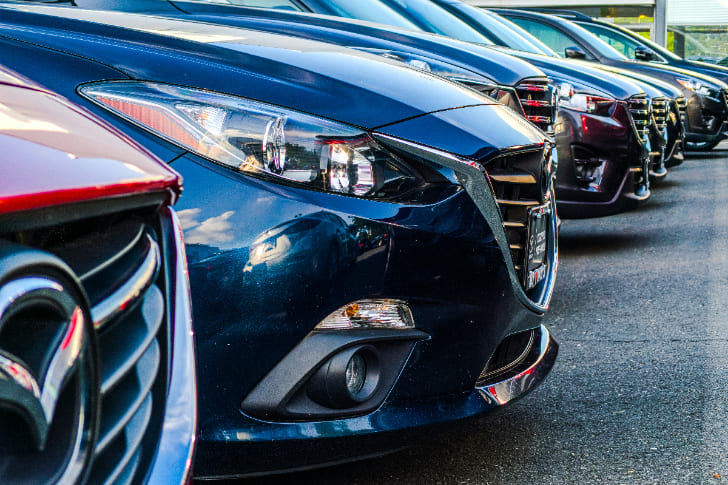Auto insurance is more than just a legal requirement in most states—it’s a critical safeguard for your finances, your vehicle, and your peace of mind. Car accidents, thefts, or natural disasters can happen unexpectedly, and without proper insurance, the financial consequences can be devastating.
Understanding the nuances of auto insurance can save you money, ensure proper coverage, and protect you from liabilities.

In this article, we will explore 10 essential things you must know about auto insurance to make informed decisions and maintain financial security.
1. Auto Insurance Is Legally Required
In most states, auto insurance is mandatory. While specific requirements vary by state, almost all states require drivers to carry at least liability insurance to cover bodily injury and property damage to others.
Example: If you cause an accident that injures another driver and damages their vehicle, liability insurance covers medical expenses and repairs, preventing you from paying out-of-pocket.
Failing to carry required insurance can lead to fines, license suspension, or even jail time, depending on state laws. Always ensure you meet your state’s minimum coverage requirements.
2. There Are Different Types of Auto Insurance Coverage
Understanding the various types of coverage is essential for choosing the right policy:
- Liability Coverage: Covers injuries and property damage to others if you are at fault.
- Collision Coverage: Pays to repair or replace your vehicle after an accident, regardless of fault.
- Comprehensive Coverage: Protects against non-collision events like theft, fire, vandalism, and natural disasters.
- Personal Injury Protection (PIP) or Medical Payments Coverage: Covers medical expenses for you and passengers, regardless of fault.
- Uninsured/Underinsured Motorist Coverage: Protects you if the other driver is at fault but lacks adequate insurance.
Tip: Review your policy carefully and ensure it includes coverage types that align with your driving habits, location, and vehicle value.
3. Premiums Depend on Multiple Factors
Auto insurance premiums are not one-size-fits-all. Insurers evaluate various factors to determine your rates:
- Age and gender
- Driving history and claims record
- Vehicle type and age
- Location and crime rates
- Credit score (in some states)
- Mileage and usage
Example: A young driver with multiple speeding tickets will typically pay higher premiums than an experienced, accident-free driver.
Tip: Maintaining a clean driving record, choosing a safe vehicle, and bundling insurance policies can reduce your premium significantly.
4. Deductibles Affect Your Costs
A deductible is the amount you pay out-of-pocket before insurance covers damages. Deductibles apply primarily to collision and comprehensive coverage.
- Higher Deductibles: Lower monthly premiums but higher out-of-pocket costs during a claim.
- Lower Deductibles: Higher premiums but less financial burden if an accident occurs.
Example: If your car is damaged in an accident costing $5,000 and your deductible is $1,000, you pay $1,000, and the insurance covers the remaining $4,000.
Choosing the right deductible balances affordability and financial preparedness in case of an accident.
5. Liability Coverage Protects Your Assets
Liability insurance is critical because it shields your assets from lawsuits. Accidents can result in medical bills, property repair costs, and legal fees that may exceed your savings if you lack sufficient liability coverage.
Example: A severe accident causes $200,000 in damages, but your liability limit is $50,000. You would be personally responsible for the remaining $150,000.
Tip: Consider purchasing higher liability limits if you have significant assets or live in a state with high medical and repair costs.
6. Uninsured and Underinsured Motorist Coverage Is Essential
Not all drivers carry adequate insurance. Uninsured/underinsured motorist coverage protects you if you are involved in an accident with a driver who lacks sufficient insurance.
Example: You are rear-ended by a driver with no insurance. Your uninsured motorist coverage can pay for your medical bills and vehicle repairs.
This coverage ensures that you are not left financially vulnerable due to another driver’s negligence.
7. Comprehensive and Collision Coverage Protect Your Vehicle
While liability covers damage to others, collision and comprehensive coverage protect your own car:
- Collision Coverage: Covers repairs after accidents regardless of fault.
- Comprehensive Coverage: Protects against theft, fire, natural disasters, falling objects, and vandalism.
Example: A tree falls on your car during a storm. Comprehensive coverage will pay for repairs, while collision coverage would not.
Tip: For older vehicles, compare repair costs versus policy premiums to decide if these coverages are worthwhile.
8. Discounts Can Reduce Premiums
Insurance companies offer various discounts to make policies more affordable. Common discounts include:
- Multi-policy discounts (bundling auto with home or renters insurance)
- Safe driver discounts
- Good student discounts
- Low-mileage discounts
- Vehicle safety features, such as anti-theft devices or airbags
Example: Bundling auto insurance with homeowners insurance could save 10–20% on premiums annually.
Tip: Ask your insurer about all available discounts to maximize savings.
9. Policy Exclusions and Limitations
Every policy has exclusions. Being aware of these prevents unpleasant surprises:
- Intentional damage
- Racing or illegal activities
- Using your vehicle for commercial purposes (unless covered)
- Wear and tear or maintenance issues
Example: If your car is damaged while participating in a street race, your insurer may deny the claim due to policy exclusions.
Understanding your policy ensures you are aware of limits, exclusions, and situations requiring additional coverage.
10. Regularly Review and Update Your Policy
Your auto insurance needs may change over time due to:
- Vehicle upgrades or purchases
- Changes in driving habits or commute
- Moving to a different location
- Marriage, adding family members, or life changes
Example: Upgrading to a new luxury car may require higher coverage limits or additional comprehensive protection. Regularly reviewing your policy ensures you have adequate protection at the best possible price.
Tip: Review your policy annually and consult your insurance agent about adjustments, discounts, and coverage options.
Additional Considerations for Auto Insurance
- Rental Car Coverage: Some policies include coverage for rental cars or offer rental reimbursement for damaged vehicles.
- Roadside Assistance: Optional coverage can provide towing, battery jump-starts, or flat tire assistance.
- Gap Insurance: Covers the difference between your car’s current value and remaining loan balance if totaled.
- Claims Handling: Choose insurers with a reputation for fair and efficient claims processing.
Example: If your financed car is totaled and your insurance only pays the market value, gap insurance can cover the remaining loan balance.
Common Misconceptions About Auto Insurance
- “Liability coverage is enough.”
Liability protects others but does not cover your vehicle or medical expenses. - “Older cars don’t need comprehensive coverage.”
While optional, theft, fire, or natural disasters can still cause costly damage. - “I don’t need insurance if I rarely drive.”
Even occasional accidents or uninsured drivers can lead to financial loss. - “Red cars cost more to insure.”
Vehicle color does not affect premiums; vehicle type, age, and safety features do.
Benefits of Auto Insurance
Auto insurance provides more than just legal compliance; it offers:
- Financial protection for accidents, theft, and disasters
- Liability coverage to protect your assets
- Peace of mind while driving
- Coverage for medical expenses for you and passengers
- Support for vehicle repairs or replacement
Example: An accident on a rainy day causes damage to multiple vehicles. With comprehensive coverage, your insurer covers repairs, preventing out-of-pocket expenses that could total thousands of dollars.
Choosing the Right Auto Insurance Policy
When selecting a policy, consider:
- Minimum coverage requirements in your state
- Additional coverage needs like collision, comprehensive, or gap insurance
- Deductibles and premiums that fit your budget
- Insurance company reputation and customer service
- Discounts and benefits available
Tip: Compare multiple insurers, review customer feedback, and ask for quotes to find the best combination of coverage and cost.
Conclusion
Auto insurance is a critical investment that protects your vehicle, finances, and personal safety. From liability protection to comprehensive coverage, medical payments, and uninsured motorist protection, a well-chosen policy safeguards you against the uncertainties of driving.
By understanding the 10 key things about auto insurance, you can make informed decisions, secure adequate protection, and avoid costly gaps in coverage.
Key Takeaways:
- Auto insurance is legally required in most states.
- Policies include various coverage types—liability, collision, comprehensive, and more.
- Premiums depend on multiple factors, including driving history and vehicle type.
- Deductibles balance premiums with out-of-pocket costs.
- Liability coverage protects your assets from lawsuits.
- Uninsured/underinsured motorist coverage safeguards you from negligent drivers.
- Comprehensive and collision coverage protect your own vehicle.
- Discounts can reduce premiums significantly.
- Be aware of policy exclusions and limitations.
- Regularly review and update your policy to match life changes and vehicle upgrades.
By staying informed and proactive, you can ensure that your auto insurance provides maximum protection and peace of mind on the road.








Leave a Reply